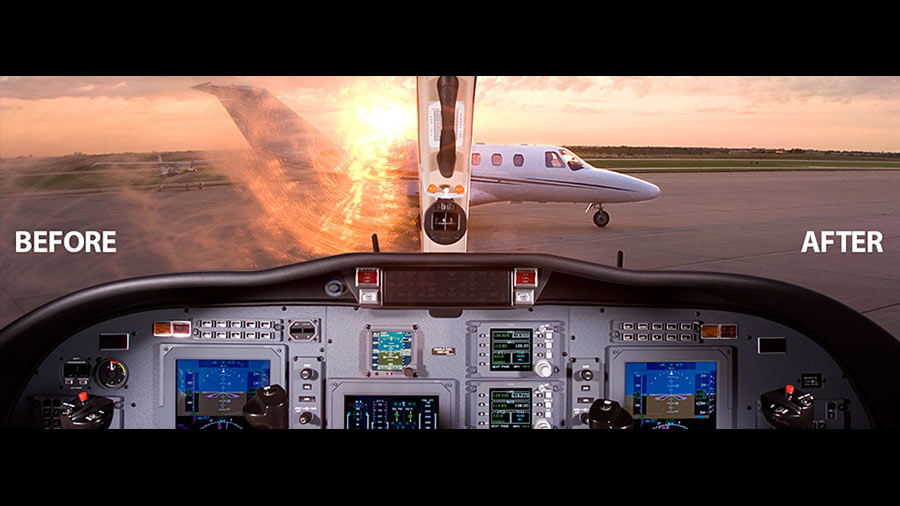
Every pilot knows that a dirty airplane windshield is more than just unsightly – it’s downright dangerous. Glare and haze reduce visibility, putting both you and your passengers at risk. Many general aviation aircraft windows are made from acrylic, which is easily damaged by household window cleaners containing ammonia. And, using the wrong cleaning technique can cause small scratches that may not be visible to the naked eye on the ground but become obvious when flying toward the sun. That’s why learning how to clean acrylic aircraft windows without damaging them is essential.
Use Gentle Cleaning Products and Techniques
Using the right cleaning products and gentle techniques will keep your airplane’s transparencies crystal clear for maximum visibility and safety. And by minimizing damage, you’ll also help your windshield and cabin windows last longer.
As a side note, boat windows are often made from the same type of plastic as acrylic aircraft windows. If you’re a boat or motorcycle, you can use these cleaning tips for your boat windows and motorcycle windows, too.
1. Rinse Aircraft Windows to Remove Debris
When cleaning acrylic aircraft windows, the most important thing is to be gentle to avoid scratches. Never use a brush to remove surface dirt and debris; rinse the windshield and cabin windows with clean water instead.
2. Gently Wipe Airplane Windows if Needed
Acrylic windows are soft and can be easily scratched, so it’s important to use the right cleaning products and technique. Refer to the your aircraft’s maintenance manual to find the recommended cleaners for your airplane windows.
If needed, use a non-abrasive specialized aircraft window cleaner. Never use glass cleaners with ammonia, as they will damage your aircraft windshield and windows.
To prevent scratching, avoid using paper towels. A soft cotton t-shirt or a clean, lint-free microfiber cloth are perfect for gently cleaning your aircraft windows.
Wipe airplane windows in a back-and-forth motion to prevent scratches that will cause a glare when flying into the sun.
3. Dry Aircraft Transparencies with a Lint-Free Cloth
Use a second clean, dry microfiber cloth to wipe away water and any remaining cleaner so there won’t be any spots on your aircraft windshield. Remember to wipe back and forth to avoid scratches.
Fly Confidently with Your Clean Aircraft Windows
Now that you know how to clean acrylic aircraft windows, you can feel confident that your airplane’s transparencies will be clear for your next takeoff.
FAQs
Can you use Windex on airplane windows?
Glass cleaners like Windex have ammonia in them and are not safe to use on aircraft windows. Instead, use plain water or a specialized cleaner made for aircraft windows.
Can I repair aircraft windshield scratches myself?
Attempting to repair scratches in acrylic aircraft windows yourself is not recommended. If the scratches are big enough to be visible with the naked eye, the transparency should be evaluated to make sure it’s still within tolerance to be repaired. The good news is, surface scratches can often be polished out by a qualified aircraft window technician like the ones at Lee Aerospace.
What should I do if my aircraft windshield is clean but it looks hazy and there’s a lot of glare from the sun?
Contact a professional like Lee Aerospace for aircraft window repair or replacement. We’ll check your transparency to look for chips, cracks, crazing and other damage. Then we’ll let you know if aircraft window polishing is an option to restore your transparency or if it needs to be replaced. For your convenience, you can ship your windows to us or we have mobile aircraft window repair technicians standing by around the world that can be dispatched to your hangar.
